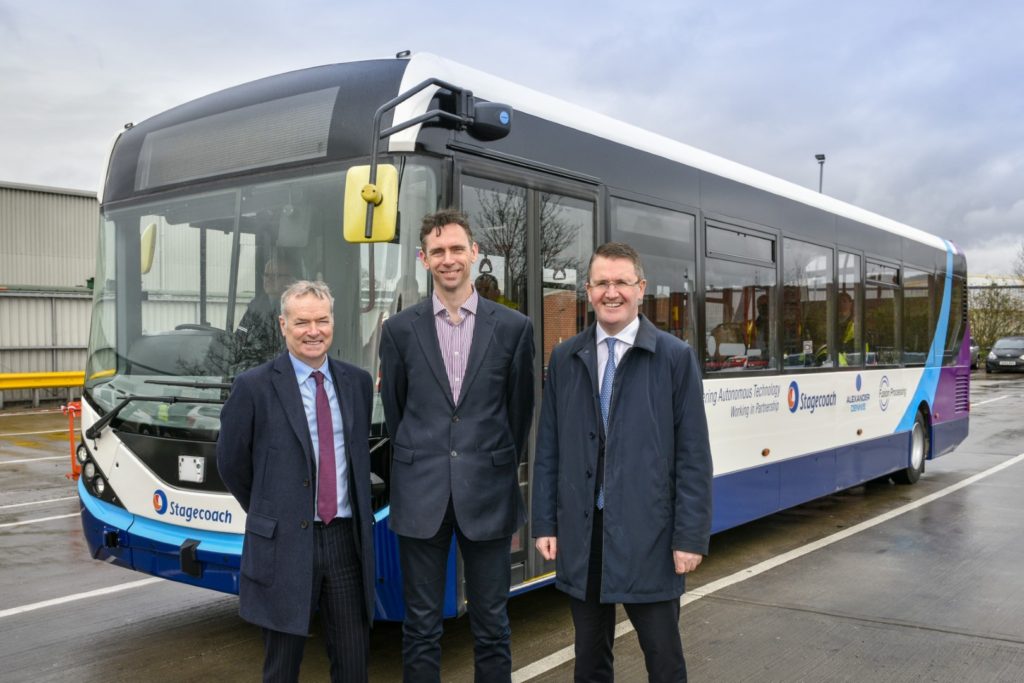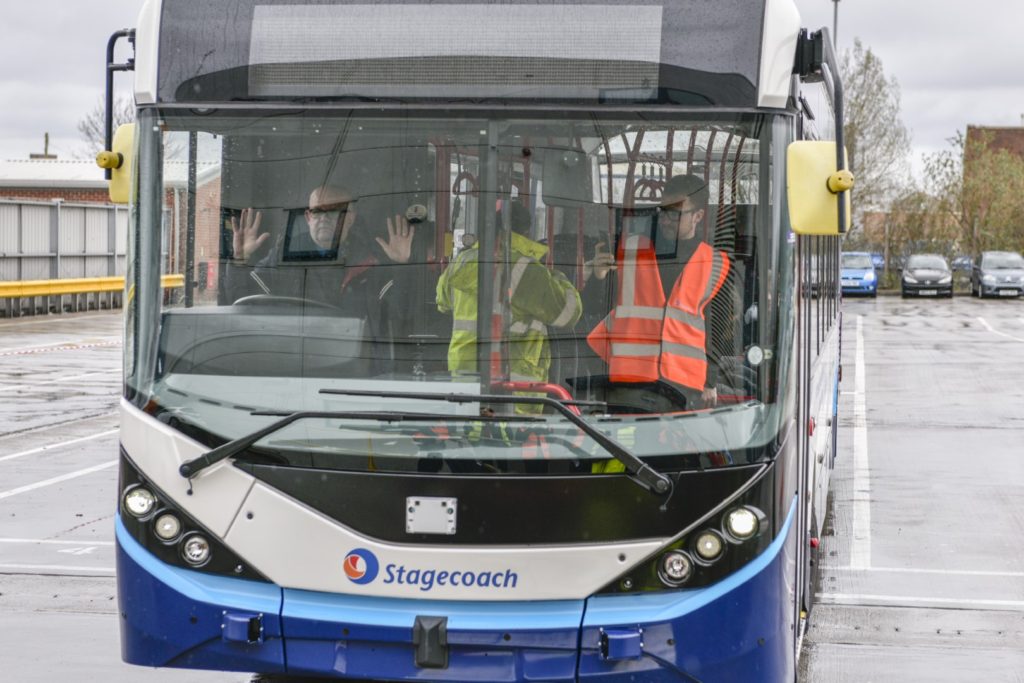The UK’s first full-sized autonomous bus is now being tested in a Manchester bus depot. The ground-breaking project, involving a single-deck vehicle, is part of a programme being delivered by transport operator Stagecoach in partnership with bus manufacturer Alexander Dennis Limited (ADL) and technology company Fusion Processing.

The 11.5m ADL Enviro200 vehicle is now able to operate autonomously within Sharston depot, and the technology being used could also provide future road safety benefits for vehicles operating in manual mode.
Stagecoach Chief Executive Martin Griffiths said: “Stagecoach was the original transport disruptor, trying new things and breaking new ground, and that has never changed. This is an exciting project to trial autonomous technology on a full-sized bus for the first time in the UK. Our employees are the beating heart of our business and I believe that will remain the case, but the world is changing fast, particularly where new technology is involved, and it’s our job to lead the way in looking at ways to continually progress and improve our operations for the good of the many people who use our bus services every day.”
The ADL-manufactured bus has been fitted with the CAVstar® system provided by Fusion Processing Ltd, and is being trialled by Stagecoach. The trial includes the bus being used in autonomous mode within the depot environment, to carry out movements such as parking and moving into the bus wash. The first public demonstration of the bus was held on 18th March 2019, attended by the Chief Executives of each partner organisation.
The CAVstar® control and sensing system was utilised successfully in the UK’s largest public trial of autonomous vehicles to date, in Greenwich last year, and a number of other projects. The system uses multiple sensor types including radar, LIDAR, optical cameras and ultrasound, along with satellite navigation to detect and avoid objects, in all weathers, day and night, and plan an optimum path for the vehicle.
Jim Hutchinson, CEO of Fusion Processing Ltd said: “Our CAVstar® sensor and control system has now been successfully applied to vehicles ranging in size from two-seater electric vehicles right up to a 12m, 43 seater bus. Today offers a glimpse of how future bus depots can be automated for improved safety and efficiency. Our advanced driver-assistance systems such as CycleEye® already offers improved operational safety for buses and HGV’s today, and we anticipate further new ADAS products as spin offs from the AV bus project. Beyond this trial we look forward to continue our collaboration with Stagecoach and Alexander Dennis Limited delivering the world’s first large scale autonomous bus service in Edinburgh in 2020.”
Colin Robertson, ADL Chief Executive added: “Alexander Dennis is at the forefront of innovation in the bus industry. This trial allows us to evaluate potential benefits of autonomous technology in a real-world scenario, and feeds into our extensive work to further improve the safety of buses with the help of state-of-the-art technology.”
The software being used in the pilot vehicle also forms the basis for a significant autonomous vehicle trial due to get underway in 2020 when a fleet of five autonomous buses similar to this one will operate, carrying passengers, between Fife and Edinburgh, across the Forth Road Bridge Corridor.
Funding of £4.35m from the UK Government’s Innovate UK fund was awarded last year to the CAVForth project team which includes Stagecoach along with partners Transport Scotland, Alexander Dennis Limited (ADL), Fusion Processing Ltd, ESP Group, Edinburgh Napier University and University of West of England. The vehicles in both trials will be used autonomously to Level 4 standard which means that a safety driver must remain on board in line with UK regulations.
The technology can also be used to help improve the safety of road users in manually driven vehicles. For example, the sensor system on the vehicle can be used to provide assistance to the driver by warning of cyclists or pedestrians that may be in the blind spot or arrive unexpectedly close to the vehicle.
